The capital of Denmark is a forward-looking place, known for its green lifestyle, cutting-edge food scene and innovative design.
The layout of the Inner City goes back to the reign of Christian IV (1577-1648). He was responsible for Copenhagen’s canals, defensive ramparts and lasting monuments like Rosenborg Castle and the Round Tower, which is Europe’s oldest functioning observatory.
Over the last 60 years Copenhagen has put pedestrians and cyclists before road traffic. With public transport or your own pair of wheels you can zoom from royal palaces and castles, to first-class museums, from the edgy but free-thinking Christiana to the old-time fun of Tivoli.
Copenhagen is as convivial as they come in summer, when the many parks and gardens always have something going on, and you can commandeer a cafe table at stylish Christianshavn, part of that flurry of 17th-century construction by Christian IV.
1. Nyhavn
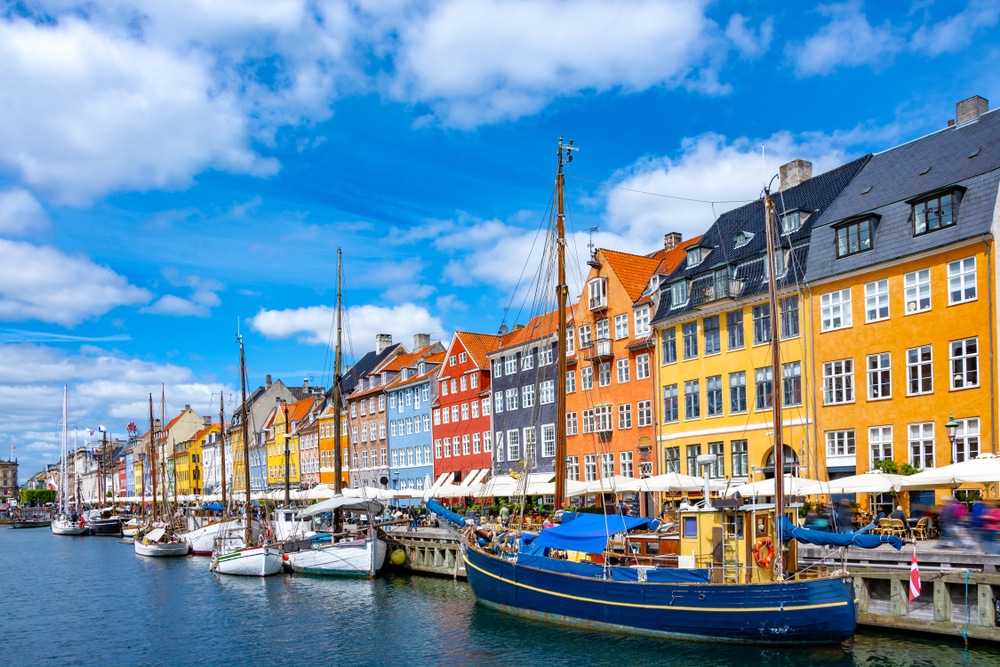 Source: MarinaD_37 / shutterstock
Source: MarinaD_37 / shutterstockAn image that everyone connects with Copenhagen is the terrace of colourful townhouses lining this 450-metre canal on cobblestone quays.
Nyhaven was ordered by King Christian V in the 1670s, as an alternative to the existing harbour, and was constructed using labour from Swedish prisoners captured during the Dano-Swedish War 1658-1660.
The oldest property, at No. 9, dates back to 1681, while the south quay on the inner section is berthed by beautiful heritage ships belonging to the Danish National Museum.
The emblematic view is of the north quay, with its jumble of houses in varying colours, while the buildings on the south side are less jaunty and more palatial.
Hans Christian Andersen lived on Nyhavn between 1845 and 1864, and there’s a plaque to mark his home at No. 67. Like a lot of dockland neighbourhoods this was one of the seediest parts of the capital until the 1980s when it became a tourism hotspot.
Canal tours embark from Nyhavn, and those charming townhouses have a welcoming row of bars and restaurants for a calming, not to mention scenic cold drink on a summer evening.
2. Cycling
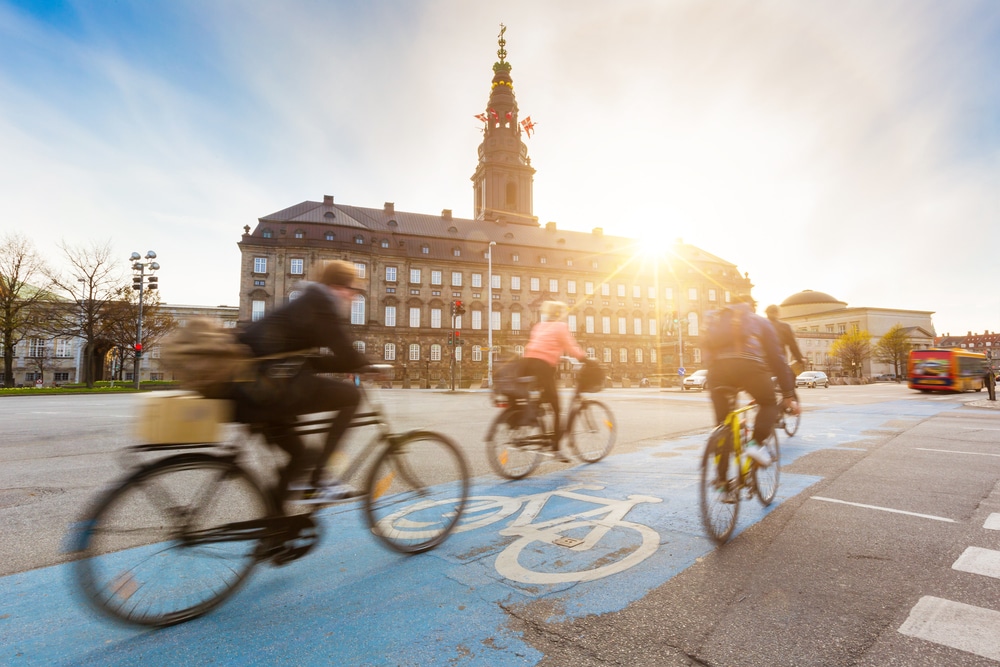 Source: William Perugini / shutterstock
Source: William Perugini / shutterstockCopenhagen is a pioneer for urban biking. Since the 1960s the city’s streets have been plotted with two wheels in mind, and new traffic-free bridges like the spectacular Bicycle Snake make it even safer to get around.
Quite simply, cycling the essential way to experience the city, and there’s a ton of rental businesses, like Baisikeli whose profits go to African countries.
The tourist board has even set out a host of tourist-friendly routes, showing off the architecture of Bjarke Ingels, following the route for the 2022 Tour de France Grand Départ or taking you to the famed Six Forgotten Giants lurking in woodland in the city’s suburbs.
Of course, because of the dense bicycle traffic this also means that there’s a sophisticated culture and etiquette to cycling that you may need to get to grips with first.
Probably the best tip for newbies is to avoid the main arteries, especially at rush hour, even if this is a spectacle that needs to be witnessed if you’re from a less cycle-oriented city. The Copenhagen tourist board has also put together videos and leaflets to help you get the hang of things.
3. Strøget
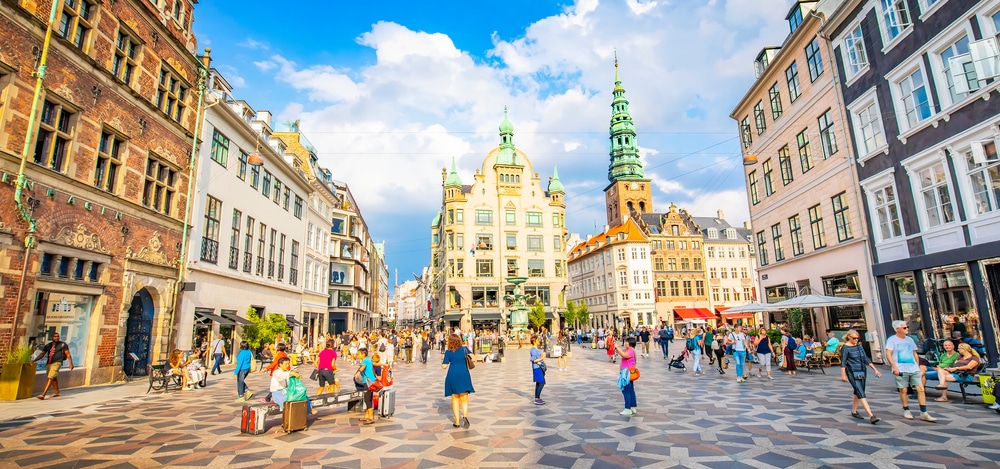 Source: Arcady / shutterstock
Source: Arcady / shutterstockPartly to thank for the popularity of the bicycle in Copenhagen is this long and meandering pedestrian street.
At 1.1 kilometres, Strøget is up there with Europe’s longest pedestrianised shopping arteries, beginning in the west and City Hall Square and taking you all the way to the Kongens Nytorv (King’s New Square), by Nyhavn.
After traffic built up in the post-war years, Strøget was made car-free in 1962, marking a culture shift in Denmark’s capital by giving precedence to walkers and cyclists.
Most of Copenhagen’s flagship stores can be found along the route. These include High Street staples like H&M, Uniqlo and Zara on the City Hall Square side, and give way to boutiques for luxury brands like Gucci, Burberry, Polo Ralph Lauren and Bang & Olufsen as you head towards Frederiksstaden.
Allow as long as you can to take in street performers and to be distracted by the many sights and attractions on the street or just off it, from the majestic tower of the City Hall to Nyhavn at the far end.
4. Amalienborg
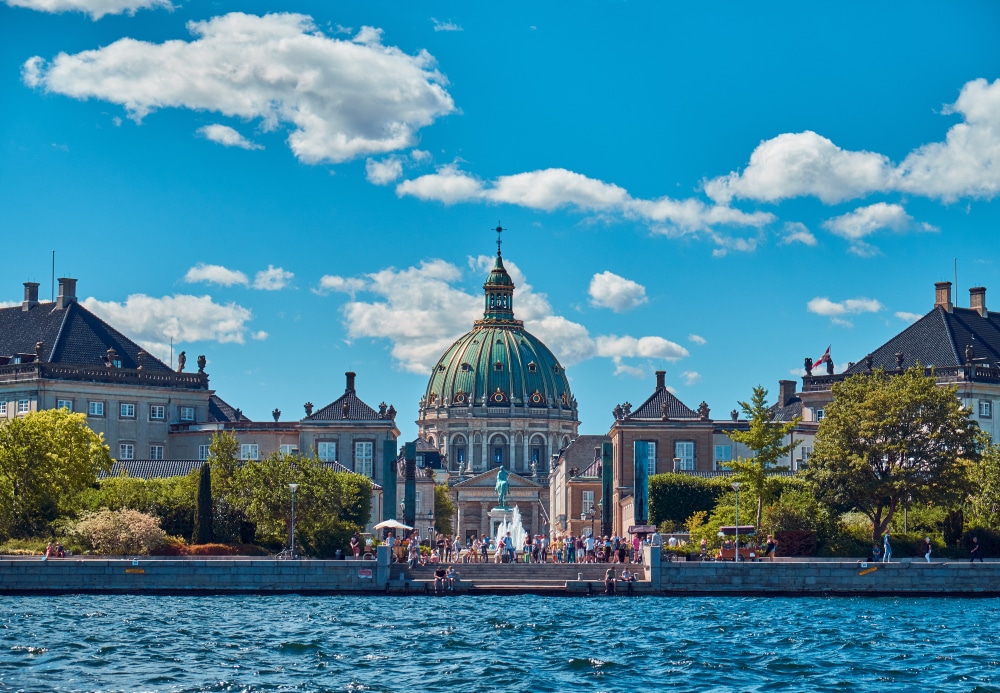 Source: badahos / shutterstock
Source: badahos / shutterstockThe Danish Royal Family resides at this palace made up four blocks with identical facades and Rococo interiors, placed around an octagonal courtyard.
The origins of Amalienborg go back to the middle of the 18th century as a residence for four noble families, but the royal family moved in when Christiansborg Palace burnt down in 1794.
Each of these blocks is associated with a different monarch, and named for Christian VII, Christian VIII, Frederick VIII and Christian XI. The first two are open to the public, and the Royal Danish Collection within offers rare insights into 250 years of Danish royal history.
In Christian VIII’s palace you’ll tour the private chambers of kings and queens, preserved in a spectrum of styles and to show off changing tastes and endowed with all sorts of interesting personal items.
Christian VII’s palace meanwhile is in a consistent and lavish Rococo style, hosting official royal functions. On a tour you’ll pass through gilded spaces like the Great Hall, Dining Room and the Flora Danica Room, admiring exquisite furnishings and works by European Masters as you go.
5. Tivoli Gardens
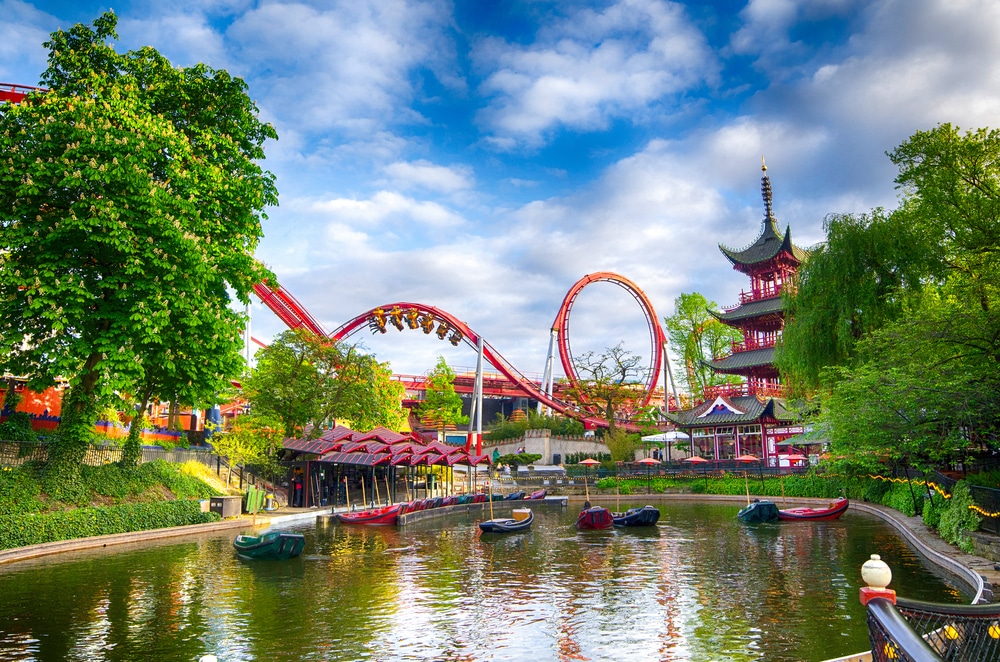 Source: Anastasia Pelikh / shutterstock
Source: Anastasia Pelikh / shutterstockAnother Copenhagen icon is this first-rate amusement park within walking or cycling distance from the Town Hall Square.
Tivoli Gardens is in fact the second oldest operating amusement park in the world, laid out on the former ramparts in the early-1840s and blending lush landscaping, whimsical architecture, rides, international dining and plenty of culture.
The park is at once old-fashioned and modern, with a quaint, nostalgic atmosphere matched by time-honoured rides like the Rutschebanen wooden roller coaster from 1914. To give you an idea of how retro this ride is, there’s a brakeman on every train.
There’s lots of high-tech fun too. For instance, The Demon, a steel roller coaster from 2004 is the signature thrill ride, with three inversions and an optional virtual reality experience that was added in 2017.
These are all accompanied by a world of other amusements like the 80-metre Star Flyer, bumper cars, a Ferris wheel, lots of kiddie rides, theatres, pavilions for music performances and a concert hall that can seat 1,660.
We also have to mention Tivoli’s highly cosmopolitan dining options, encompassing everything from shawarma to sushi to smørrebrød.
Website: https://www.tivoli.dk/
6. Grand Tour of Copenhagen
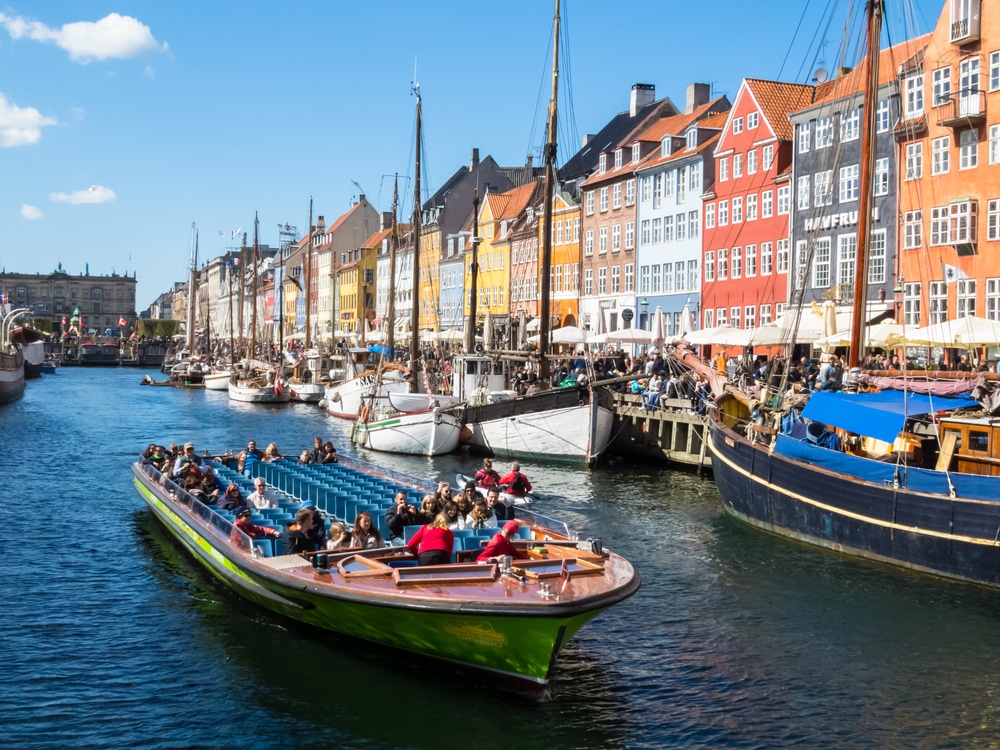 Source: Arndale / shutterstock
Source: Arndale / shutterstockA rewarding way to see Copenhagen’s big sights is from the water. After all, this is a city originally geared towards waterborne trade, and given a system of canals and moats by Christian IV in the 17th century.
The Grand Tour of Copenhagen sets off from Nyhavn or Ved Stranden, in eco-friendly boats that have no harmful effects on the city’s waterways and Inner Harbour.
On your voyage you’ll be given an in-depth commentary as you take in the city’s churches, palaces, heritage buildings and most famous sights from a fresh angle.
The itinerary includes many of the items on this list, like the Copenhagen Opera House, the Little Mermaid, Christiansborg Palace and Amalienborg. The Grand Tour usually takes an hour.
Book online: 1-Hour Canal Cruise from Ved Stranden or Nyhavn
7. National Museum of Denmark
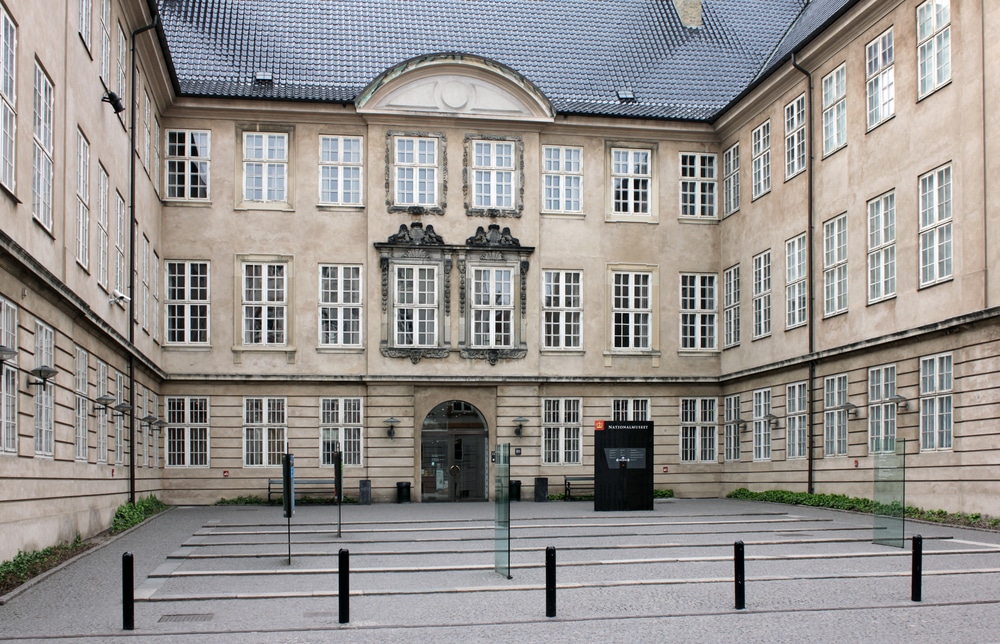 Source: Sergey Goryachev / shutterstock
Source: Sergey Goryachev / shutterstockThe main department for this institution spanning the country is the Rococo-style Prince’s Mansion on the Frederiksholms Kanal. This palace was raised in 1743-44 as a residence for then Crown Prince Frederick V.
The Great Hall leaves you in no doubt about the status of this building, a good 250 years after the last royals lived here.
The National Museum of Denmark is a thrilling summary of the story of Denmark, going back to the Neolithic.
There are detailed exhibitions for Prehistory, the Middle Ages and Renaissance, Danish coins and medals and various strands of Danish history from the 17th century to the present.
Within these are some jaw-dropping artefacts, like the 2,000-year-old Gundestrup Cauldron, the Iron Age Hjortspring Boat, the Bronze Age Egtved Girl Coffin and the Trundholm Sun Chariot, also from the Bronze Age.
The museum also holds important collections for ethnography and Classical and Near-Eastern antiquities.
Website: https://en.natmus.dk/museums-and-palaces/the-national-museum-of-denmark/
8. National Gallery of Denmark
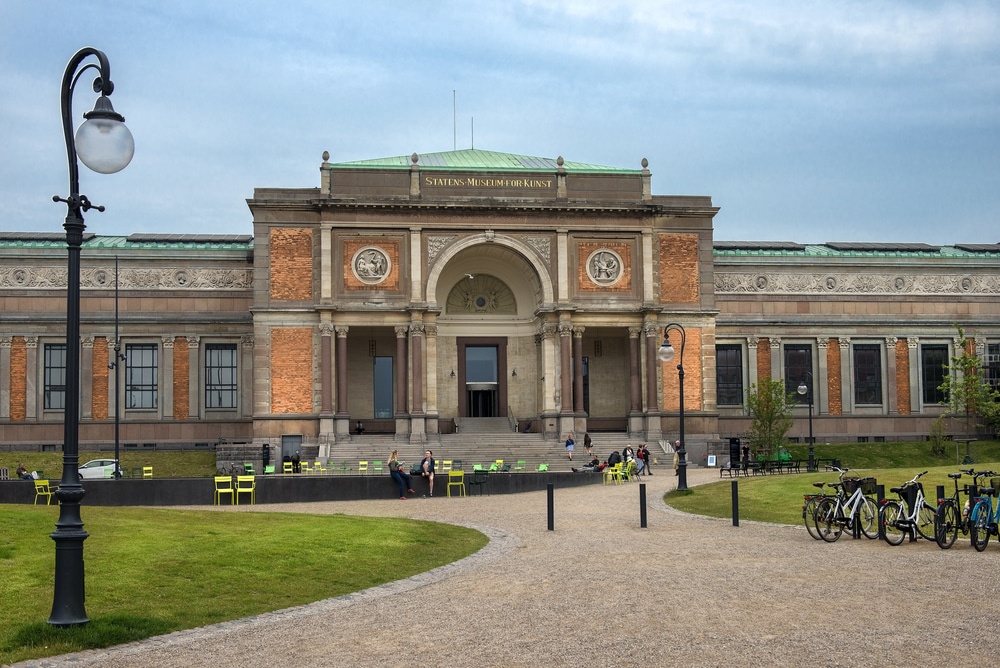 Source: irisphoto1 / shutterstock
Source: irisphoto1 / shutterstockFound beside Rosenborg Castle in the middle of Copenhagen is Denmark’s largest and most prestigious art museum, with collections covering 700 years of Danish and European art.
There are four permanent exhibitions here. European Art 1300-1800 boasts a lot of works by heavyweights from art history, like Rembrandt, Lucas Cranach the Elder, Rubens, Titian and Andrea Mantegna.
Danish and Nordic Art 1750-1900 has 400 pieces by the likes of Anna Petersen, Laurits Andersen Ring and Christen Købke, while French Art 1900-1930 is a trove of early Modern art by Picasso, Matisse, Braque, Derain and Modigliani.
These three sections are housed in an Italianate Renaissance Revival building completed in 1896. There’s also a modern extension from 1998, holding Danish and International Art after 1900, hanging pieces by Emil Nolde, Edvard Weie, Ursula Reuter Christiansen and Harald Giersing, to name a handful.
The two buildings are tied together by the remarkable, glass-panelled “Street of Sculptures”.
Website: https://www.smk.dk/
9. Ny Carlsberg Glyptotek
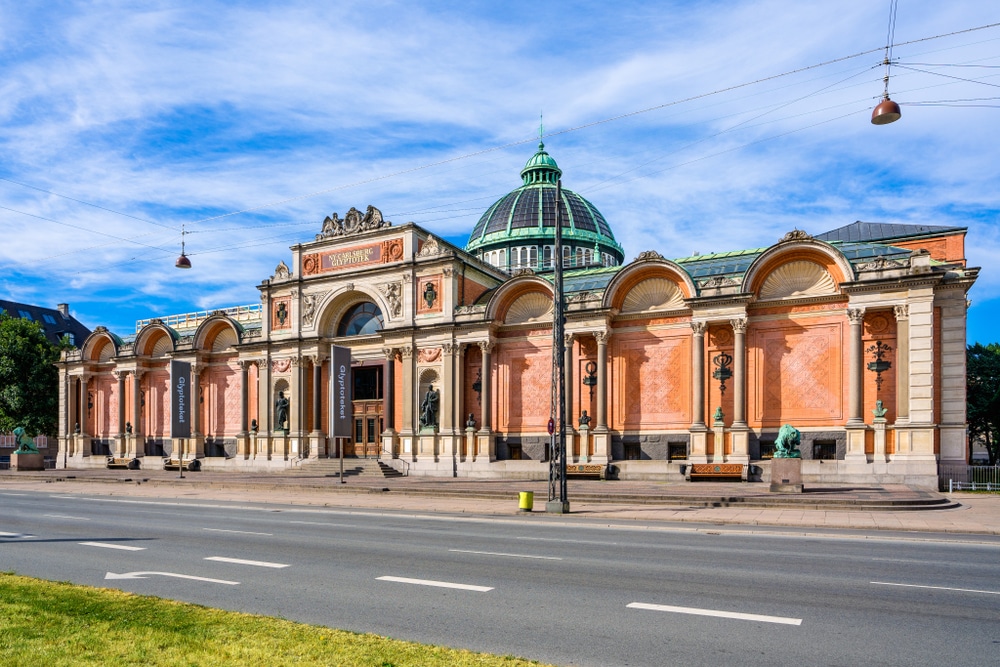 Source: foto-select / shutterstock
Source: foto-select / shutterstockCarl Jacobsen (1842-1914) was the son of the founder of the beer brand, Carlsberg, and cultivated an interest in the arts.
He built up a rich collection of Greek and Classical antiquities, forming the basis for this museum, and also commissioned Copenhagen’s famous Little Mermaid sculpture.
Jacobsen donated his collection to the state in 1888 on the condition that it be given a fitting home. And this sumptuous neo-Renaissance palace can be found on the south-eastern corner of Tivoli Gardens.
You can peruse Mesopotamian, Egyptian, Greek, Etruscan and Roman statues, pottery, reliefs and other artefacts.
The collection also shines for its 18th and 19th-century European art, with the world’s largest single holding of Golden Age Danish sculpture, one of the world’s largest collections of Rodin’s works and more than 40 pieces by Gauguin.
We have to mention the venue, complementing the exhibits with its ceiling frescoes, marble columns, mosaic floors and bas-reliefs in the friezes. Under the dome that links the two main wings is the genteel Winter Garden, planted with ferns and tall palms.
Website: https://www.glyptoteket.com/
10. Rosenborg Castle
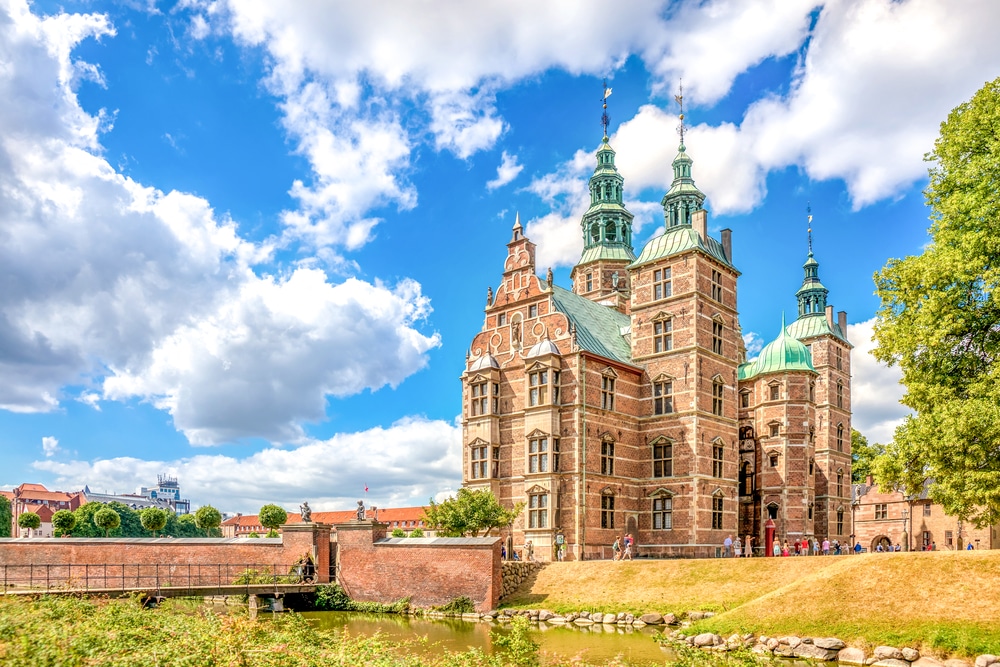 Source: Sina Ettmer Photography / shutterstock
Source: Sina Ettmer Photography / shutterstockChristian IV sparked a flurry of big architectural projects in Copenhagen in the first half of the 17th century, many of which have made it to the present day.
Surely the grandest of these is Rosenborg Castle, intended as a summer house and set in the very heart of the city. Designed in the Dutch Renaissance style, the castle has changed little inside or out since 1624 and lies in the 12-hectare Kongens Have, Copenhagen’s favourite park.
After Christian IV died, the castle was used as a royal residence in times of emergency, for instance after Christiansborg Palace burnt down in 1794.
Today it houses the Royal Collections, presenting three centuries of Danish royal regalia beginning with the reign of Christian IV in the late-16th century.
In the Knights’ Hall you can marvel at the coronation thrones, tapestries recording wars with Sweden, as well as three life-sized silver lions. In the treasury you’ll also find the Crown Jewels, going back to the 18th-century reign of Sophie Magdalene.
Allow as long as possible to enjoy the surrounding gardens, beautiful for their profusion of sculpture, herbaceous borders and the Krumspringet, a restored Renaissance park centring on a pavilion and rose gardens.
11. Christiansborg Palace
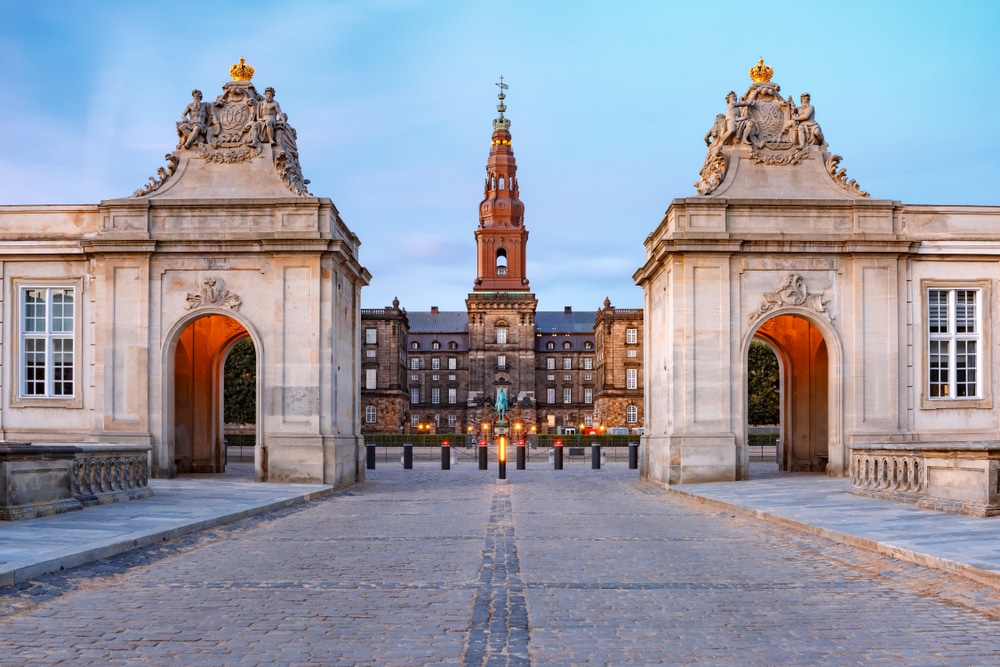 Source: kavalenkava / shutterstock
Source: kavalenkava / shutterstockAs the excavations in the basement reveal, there has been a castle on this site since the time of Bishop Absalon in the 12th century.
Christiansborg Palace became Denmark’s base of power in the late-Middle Ages and was the seat for a long line of kings and queens up to that fire at the end of the 18th century.
The current neo-Baroque building is from the beginning of the 20th century, and is remarkable for housing all three branches of government: Danish Parliament (legislative), the Prime Minister’s Office (executive) and the Supreme Court of Denmark (judicial).
This concentration of the three supreme powers under one roof is unique in the world. Parts of the building also continue to be used by the Danish Royal Family for official functions.
You can come to take a look at the opulent Royal Reception Rooms, decorated with artworks belonging to the two previous palaces. At the Tower Room is a wonderful series of 11 tapestries woven for Queen Margarethe II’s 50th birthday in 1990 and recording 1,000 years of Danish History.
Other areas included in a visit are the Great Hall, the Royal Stables, the Palace Chapel, the Royal Kitchen and the historic ruins under the palace.
12. Freetown Christiania
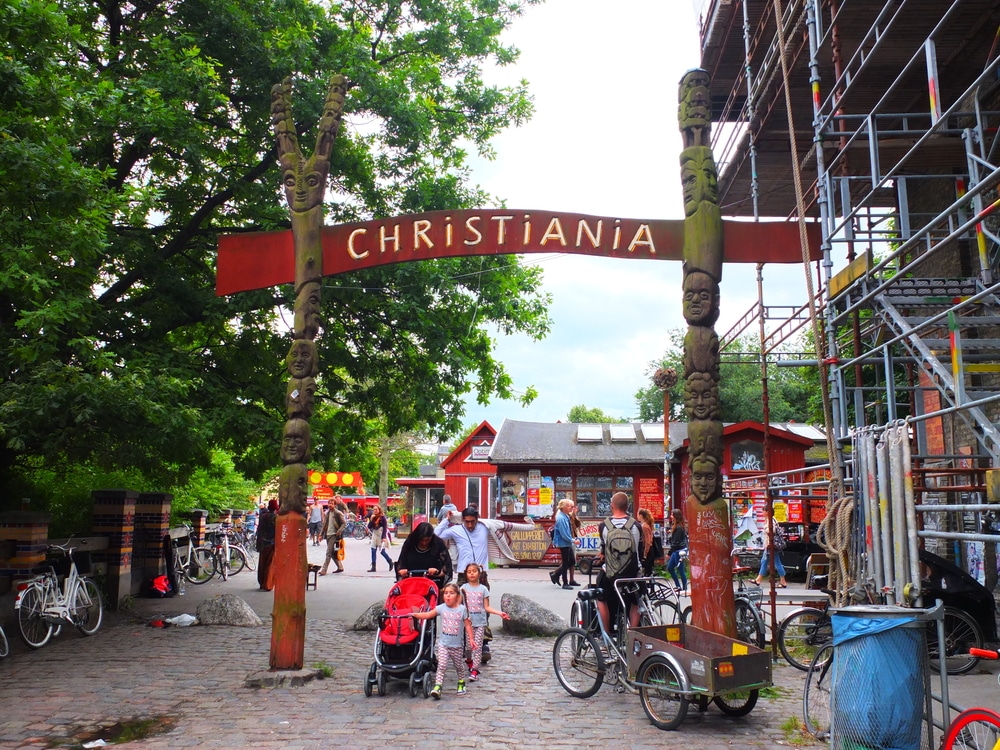 Source: Robert Szymanski / shutterstock
Source: Robert Szymanski / shutterstockA product of the Counter Culture in the early-70s, Christiania is a world-famous Anarchist commune, home to around a 1,000 people and visited by hundreds of thousands every year.
The location has a lot of history, on the outer ring of Copenhagen’s ramparts and moat, at a site that was home to the Danish military until 1971.
This was squatted as a response to a lack of affordable housing in the city at the time. And the settlers designed themselves houses that are still standing and worth checking out for their quirky designs.
This enclave inevitably became the focal point of Copenhagen’s illegal cannabis trade, lending it a bit of an edge, especially on “Pusher Street”. Before entering, it’s a good idea to read up on the rules.
But there’s much more to enjoy about Christiana’s DIY spirit and communal atmosphere, in its galleries, sustainable restaurants, outdoor art and the constant thrum of live music in summer.
For the inside track you can take a guided tour given by locals, daily in the summer and on weekends for the remainder of the year.
13. Church of Our Saviour
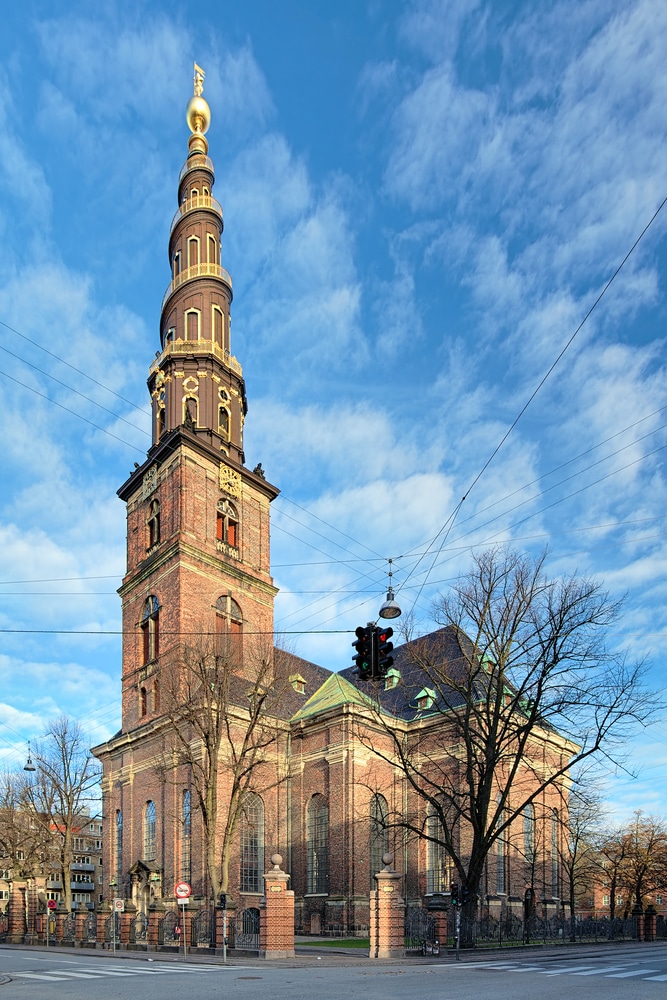 Source: Mikhail Markovskiy / shutterstock
Source: Mikhail Markovskiy / shutterstockA permanent part of Copenhagen’s silhouette for some 270 years, this Baroque Church in Christianshavn may be the most famous place of worship in Denmark.
And what makes the Church of Our Saviour so unique is its black and golden helix spire, wrapped in a staircase that makes four counter-clockwise turns to the top, 90 metres over the city.
This corkscrew spire was ready in 1752, more than 50 years after the body of the church was completed. There are 400 steps to the top, the final 150 being open to the elements and hemmed by a gilded balustrade.
As you’d hope, the views are fabulous, taking in the entirety of the city and its waterways, even if the vertiginous climb is not for the faint of heart.
In the tower below is a concert carillon, made up of 48 bronze bells, weighing a total of 12 tons. You can hear this in action on the hour, every hour between 20:00 and 00:00.
14. The Round Tower (Rundetaarn)
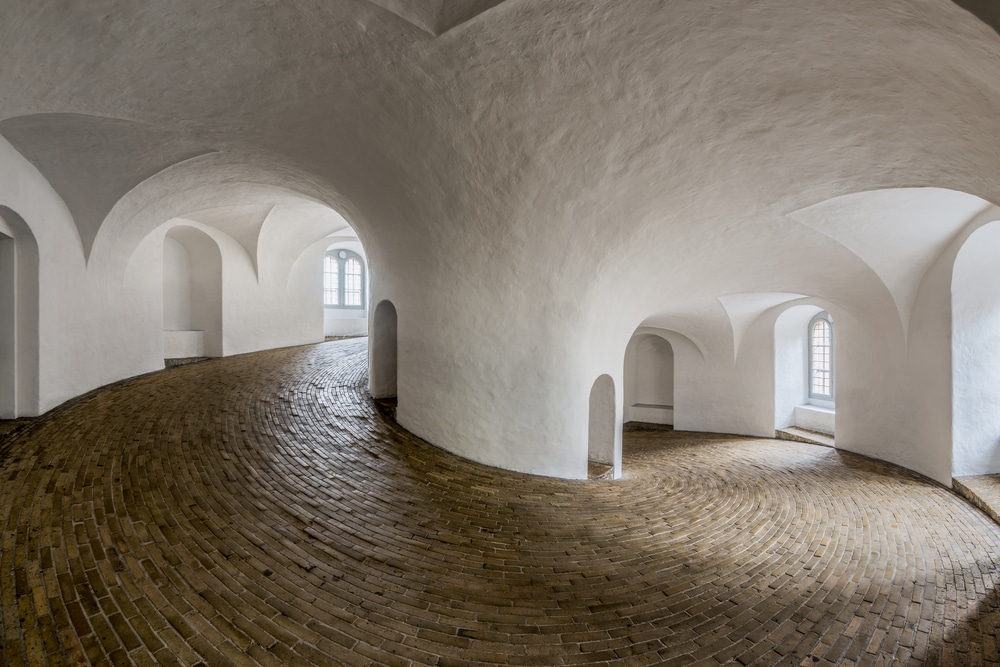 Source: Allard One / shutterstock
Source: Allard One / shutterstockChristian IV personally ordered this enduring Copenhagen landmark, completed in 1642.
Attached to the Trinitatis Church, the Round Tower is notable as the world’s oldest operating observatory. At this time, Denmark was at the forefront of the astronomy world, and Christian IV wanted to seize the opportunity to continue the work of Tycho Brahe (1546-1601).
Standing just below 35 metres in height, the observatory continues to be used by amateur astronomers and there’s an all-encompassing view of Copenhagen from the circular platform at the top.
Something very distinctive is the helical equestrian staircase winding up through the building, almost 270 metres length at its outermost edge.
You can use it to get to the top, and to access the library hall, which once contained the whole book collection for Copenhagen University and is now used for concerts and exhibitions.
Website: http://www.rundetaarn.dk/
15. Torvehallerne
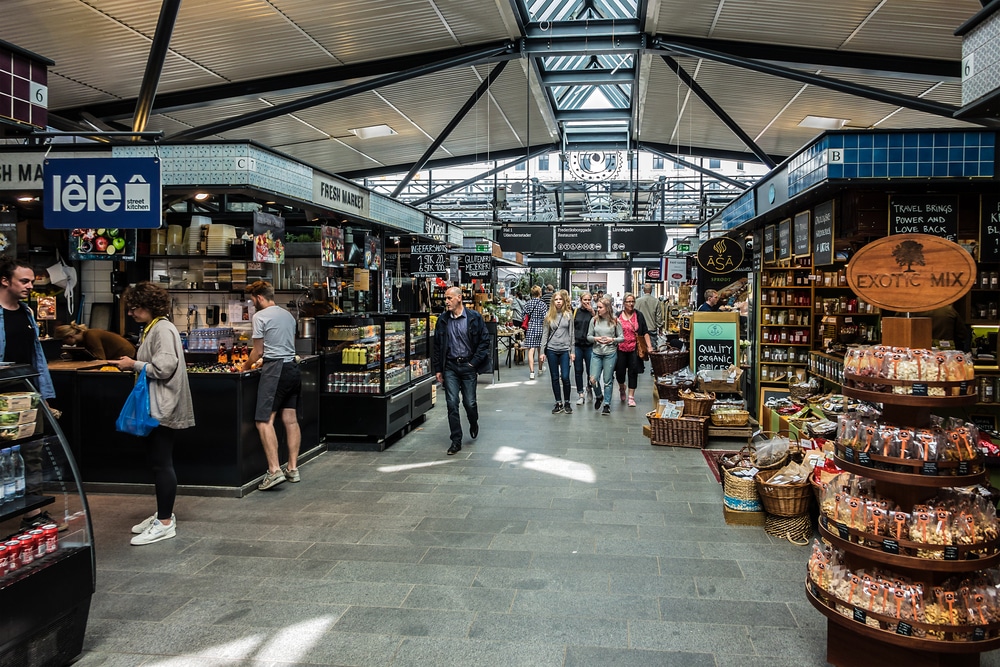 Source: Kiev.Victor / shutterstock
Source: Kiev.Victor / shutterstockSet next to Nørreport Station, Copenhagen’s most popular market could be described as the city’s pantry, attracting 115,000+ shoppers every week.
The market has a history reaching back to 1889 but only found a permanent location in 2011 with the completion of a series of halls by architect Hans Hagens.
In a city with an ever-rising culinary reputation, the Torvehallerne are not to be missed, with stalls and shops for everything from Danish seasonal produce to freshly caught fish and international goodies like Spanish pata negra ham, handmade fresh pasta and kimchi.
As with the best food markets there’s a tasty array of food made on the spot, whether you’re hankering for a breakfast pastry, sushi, tacos, palaeo options or the Danish classic, Smørrebrød.
16. Thorvaldsens Museum
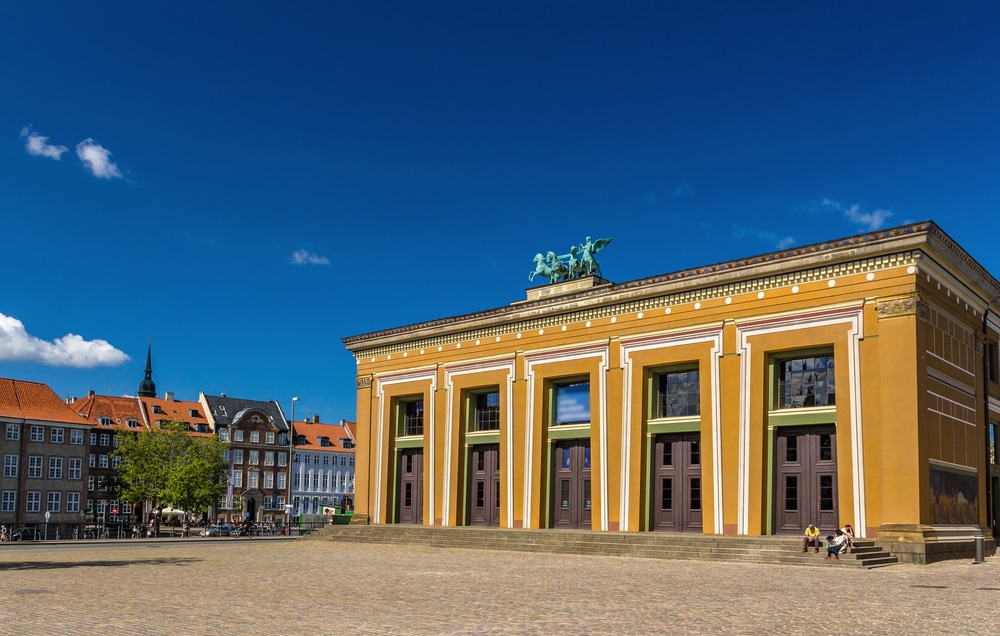 Source: Leonid Andronov / shutterstock
Source: Leonid Andronov / shutterstockOn the Slotsholmen island, facing the canal, is a museum dedicated to just one artist: The Neoclassical sculptor Bertel Thorvaldsen (1770-1844).
Thorvaldsen spent most of his career in Rome and had commissions all across Europe, among them the famous Lion Monument at Lucerne, the Nicolaus Copernicus Monument in Warsaw and the statue of Maximilian I in Munich.
He is also the only non-Catholic to have produced a sculpture for St Peter’s Basilica, carving the tomb monument of Pope Pius VII.
Appropriately, the museum is in a building informed by ancient Greek architecture, with ceilings adorned with motifs in the Grotesque style.
On show is a large array of Thorvaldsen’s sculpture and reliefs, in marble, along with the plaster casts produced for bronze statues. These are combined with the artist’s sketches and possessions, including his art collection, with pieces by Johan Christian Dahl and Franz Ludwig Catel.
Website: https://www.thorvaldsensmuseum.dk/
17. Frederik’s Church (The Marble Church)
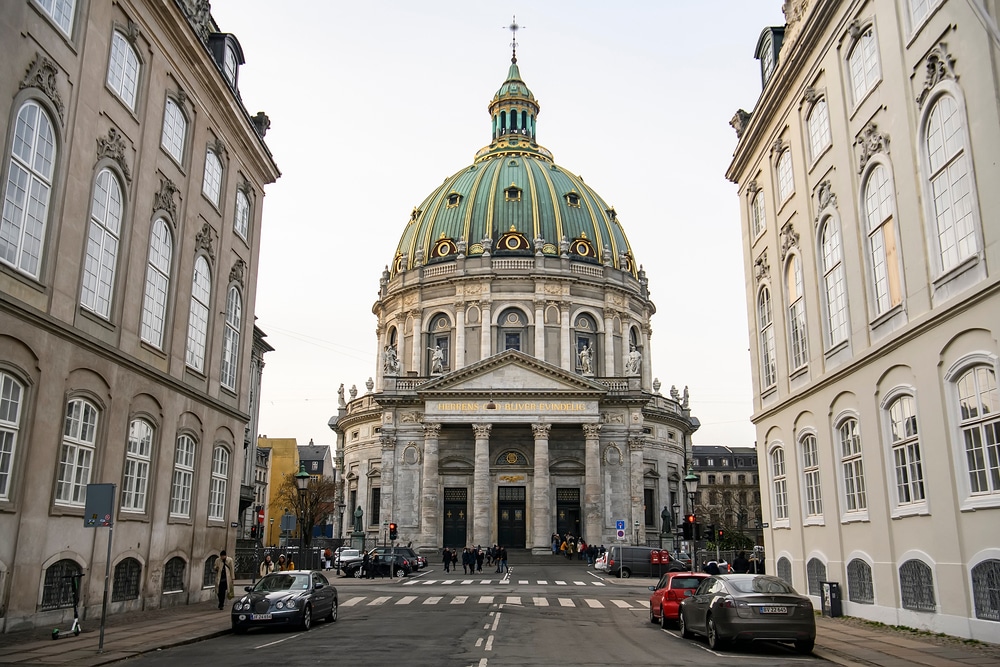 Source: paparazzza / shutterstock
Source: paparazzza / shutterstockThis grand Rococo church, easily identified by its copper-clad dome, was designed as the linchpin for the new Frederiksstaden District, proposed under Frederick V in the middle of the 18th century.
Progress on the church proved to be laborious, and the finishing touches wouldn’t be made until almost 150 years later, in 1894.
The building is composed mainly of Norwegian marble, and as a Lutheran building is on a symmetrical plan with a circular nave.
That dome is the largest church dome in Scandinavia, with a diameter of 31 metres and held up by 12 pillars. Head in to gaze up at it from below, admiring the frescoes depicting the 12 Apostles, and the 12 symbolic medallions below.
18. Botanical Garden
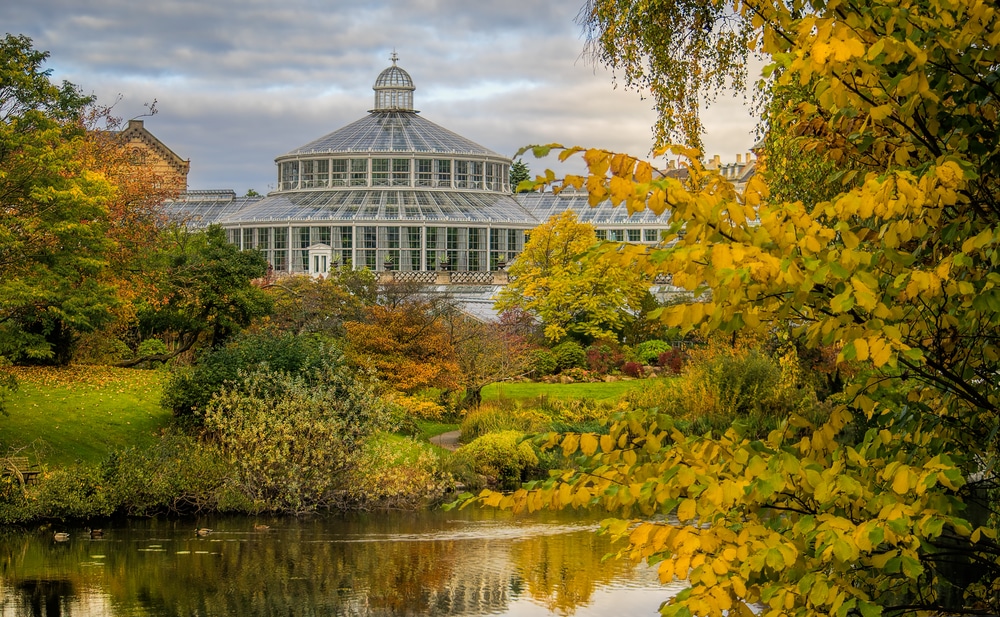 Source: STANZI / shutterstock
Source: STANZI / shutterstockThe University of Copenhagen Botanical Garden was founded as long ago as 1600 and moved to its present location beside Rosenborg Castle in 1870.
The garden is famed for its 27 glasshouses, the most celebrated of which is a sprawling Palm House, completed in 1874 and rising to 16 metres.
In this building you can take a spiral stairway to see the specimens from above, and these include cycads going back more than a century, and a palm dating to 1824.
There are more than 13,000 plant species across the garden, arranged in sections dedicated to annuals, perennials, Danish plants, conifers, rhododendrons and plants from mountainous regions. Look out for stunning specimen trees, like a bald cypress planted in 1806.
Website: https://snm.ku.dk/english/botanical-garden/
19. Langelinie
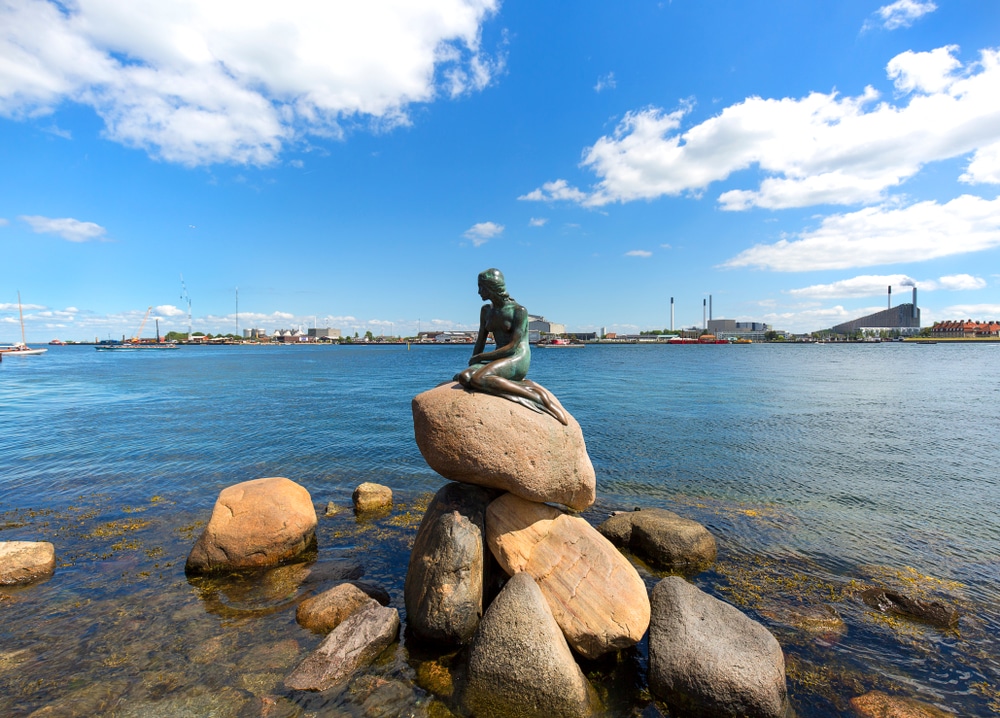 Source: Jolanta Wojcicka / shutterstock
Source: Jolanta Wojcicka / shutterstockThere’s much to enjoy at this linear park that has been a go-to for waterfront strolls for almost two centuries. In its early days the Langelinie was reserved for Copenhagen’s bourgeoisie and had a toll until 1848 to keep the riffraff out.
Today’s design dates from the expansion of the harbour in the late-19th century when it was reworked for large ocean-going ships.
The big sight in the Langeline is the emblematic Little Mermaid statue, inspired by Hans Christian Andersen’s fairytale and placed on its rocky perch by the water in 1913.
Also worth keeping in mind is the Modernist Langelinie Pavilion, dating to 1958 and containing seminal pieces of Danish design like Poul Henningsen’s Artichoke Lamp and furniture by Arne Jacobsen.
20. The David Collection
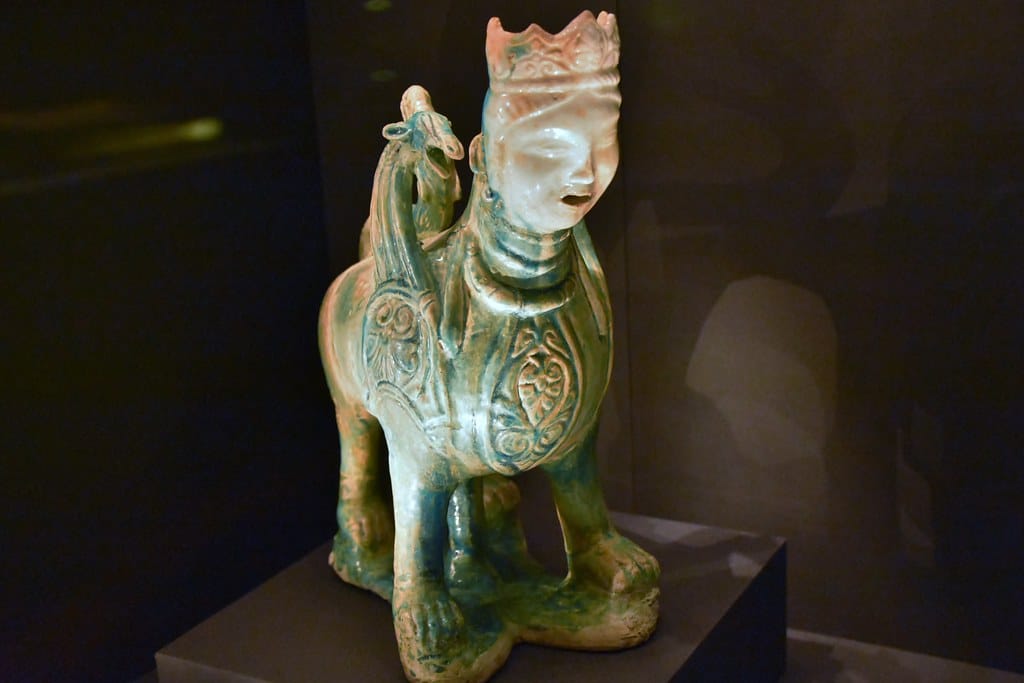 Source: Prof. Mortel / Flickr | CC BY
Source: Prof. Mortel / Flickr | CC BYThe businessman C. L. David (1878-1960) is credited with turning the facilities management company ISS A/S into an international brand. Throughout the 20th century he assembled an exceptional art collection, which he donated to the public along with the building that houses it.
David’s holiday home meanwhile has become the summer retreat for the Prime Ministers of Denmark.
As for the David Collection, this deals mainly with European fine and applied art from the 18th century, but also features Danish early-Modern Art and, most famously, the largest array of Islamic Art in Scandinavia. The latter is extraordinary, with pieces produced across the Islamic world, from Moorish Spain to China, and from the 7th to the 19th century.
On a free guided tour you’ll be wowed by Danish silver and faience, Chippendale furniture, French and German Porcelain, and painting by the likes of Julius Paulsen, Theodor Philipsen and Vilhelm Hammershøi.
Website: https://www.davidmus.dk/
21. Copenhagen Opera House (Operaen)
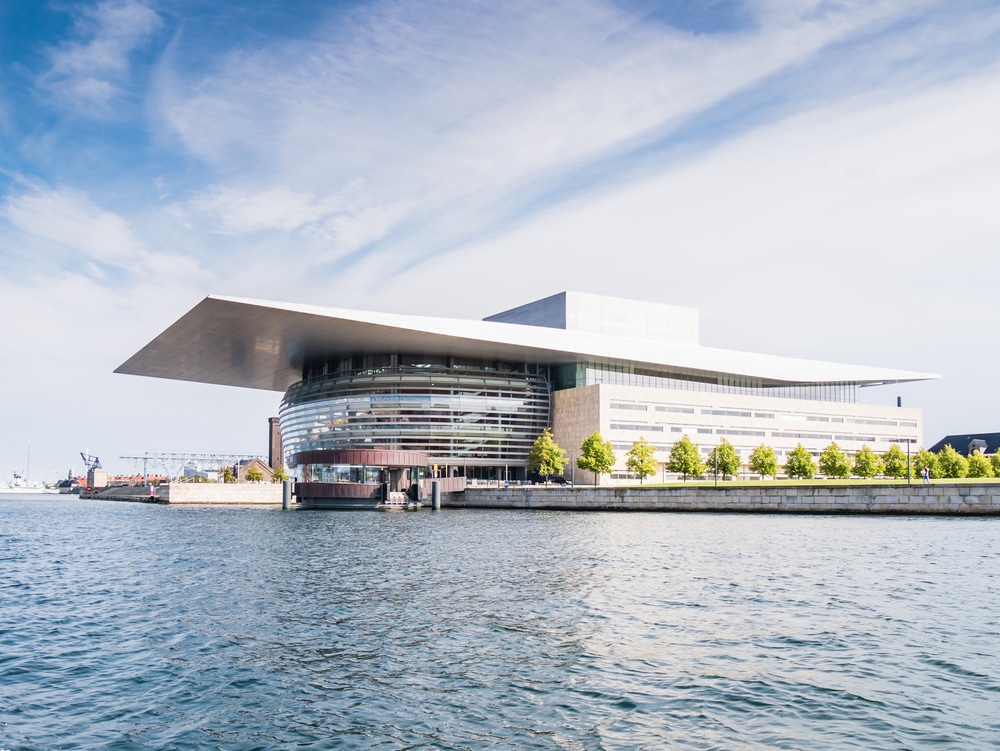 Source: Pabkov / shutterstock
Source: Pabkov / shutterstockOver 14 storeys and costing half a billion dollars, the Copenhagen Opera House is a dumbfounding architectural statement set among the historic docks on Holmen island.
This modern identifier for Copenhagen, remarkable in its simplicity, was designed by Henning Larsen (1925-2013) and inaugurated in 2005. It sits directly across the Inner Harbour from Amalienborg, on a perfect axis with the palace’s central courtyard.
The feature that grabs you is the flat roof, which extends more than 32 metres from the body of the building over the plaza in front. The whole structure is clad with German limestone, while the auditorium’s ceiling is embellished with more than 1.5 kilos of gold leaf, and the edges of the balconies have been sculpted in such a way to enhance the acoustics.
A line-up of Denmark’s most celebrated contemporary artists contributed to the interior: Olafur Eliasson designed the spherical chandeliers in the maple-clad central foyer, while per Arnoldi was responsible for the front curtain for the main stage.
Website: https://kglteater.dk/
22. Arken Museum of Modern Art
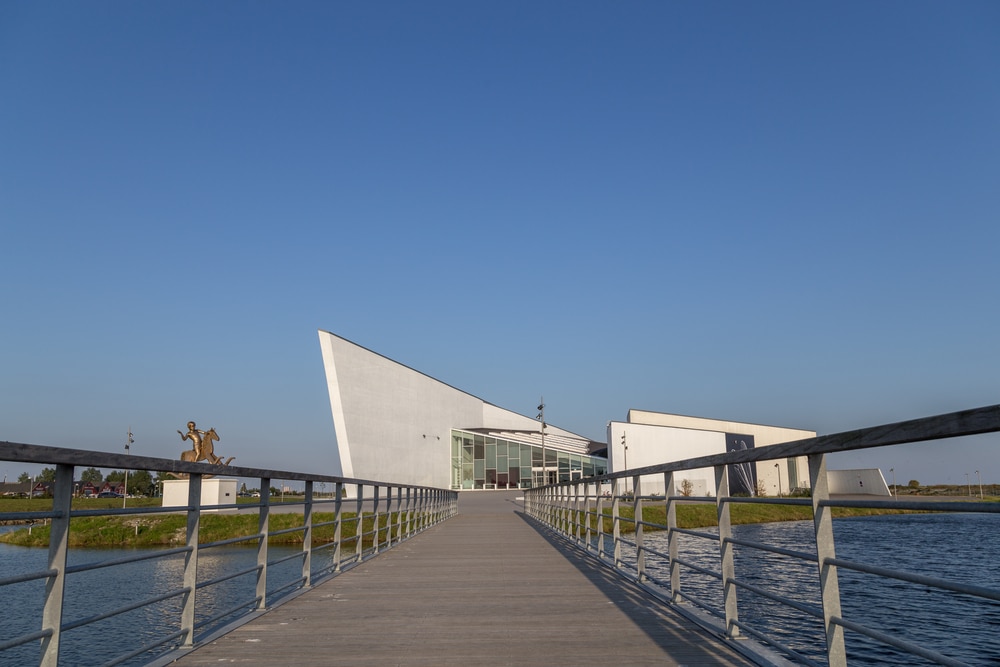 Source: Oliver Foerstner / shutterstock
Source: Oliver Foerstner / shutterstockA little out of town, this contemporary art museum is at Ishøj, a simple train ride along the coast to the south-west.
The first thing to mention about the museum is its location, surrounded by water at the Ishøj Beach Park, an environment simultaneously natural and man-made.
Dating to 1980, this development covers five square kilometres and involved land reclamation and the transfer of several million cubic metres of sand.
Not to forget the museum itself, which is a cultural touchstone for Denmark, housed in a Deconstructivist building whose designer, Søren Robert Lund, was just 25 when he won the architectural competition.
Arken acquired Danish, Nordic and international art from 1990 onwards. Some of the luminaries represented in the collection are Ai Wei Wei, Olafur Eliasson, Asger Jorn, Elmgreen & Dragset and Damien Hirst.
Website: https://arken.dk/
23. Danish Architecture Centre
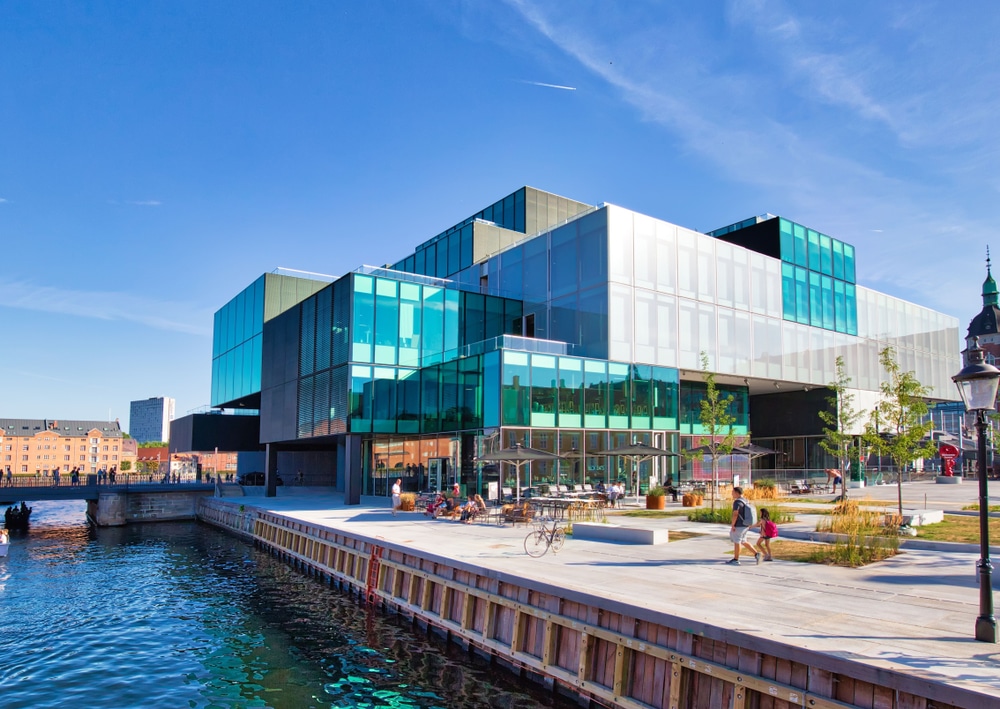 Source: eskystudio / shutterstock
Source: eskystudio / shutterstockAt the groundbreaking BLOX complex, which has revitalised a portion of Copenhagen’s industrial docklands, the Danish Architecture Centre reinforces the city’s reputation for bold, sustainable and innovative urban design.
This institution, set up in 1985, puts on thought-provoking exhibitions aimed at a spectrum of ages. These will introduce you to the latest trends and ideas, showcasing the work of Danish firms making waves around the world and looking back at the work of masters like Frank Gehry.
The centre has a schedule of talks and lectures, as well as a regular guided tour of the city pointing out how the urban fabric has evolved in the last two decades.
Website: https://dac.dk/
24. Kastellet (The Citadel)
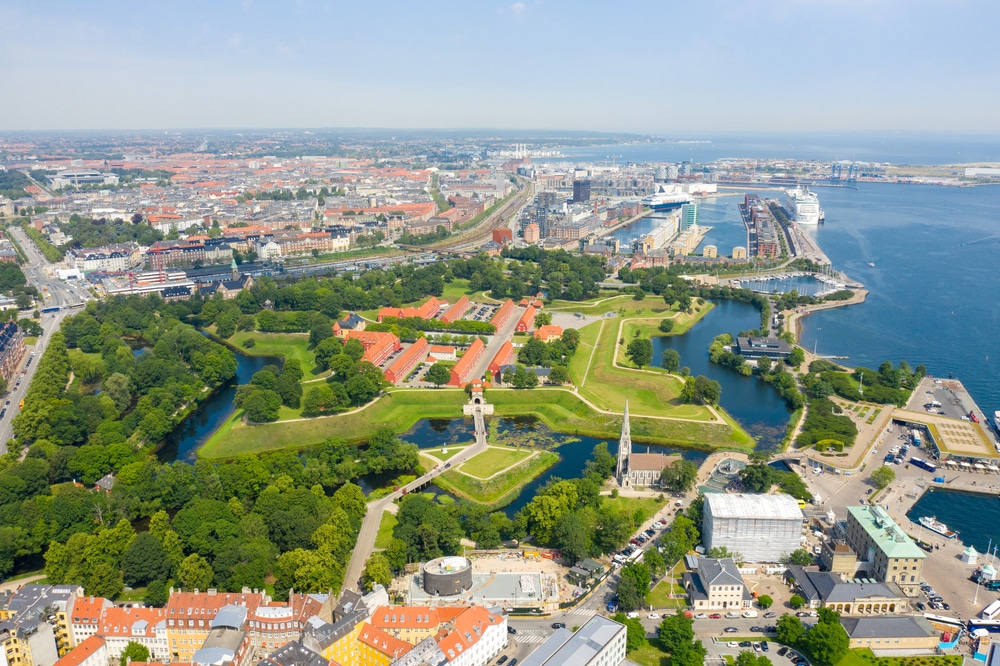 Source: Maykova Galina / shutterstock
Source: Maykova Galina / shutterstockWest of the Langelinie is a remarkably intact artillery fort that defended the city from the 1620s to the 1830s. This was part of a sophisticated network of ramparts, moats and bastions, now only visible here and in the ring of fortifications at Christianshavn.
The buildings at Kastellet continue to be used by the Danish military, but the whole site has been thrown open to the public, and is a great extension to a walk along the Langelinie. There’s plenty of 18th-century heritage here, in the Citadel Church (1704), prison complex, barracks, Commander’s House (1725) as well as a windmill raised in 1847.
You can catch a daily changing of the guard ceremony at the Central Guard House at noon, while there’s a museum display showing off the garrison’s historical collections.
Wandering the green earthworks planted with mature trees you’ll come across a wide variety of birdlife in summer, like herons, ducks, gulls and swans.
25. Smørrebrød
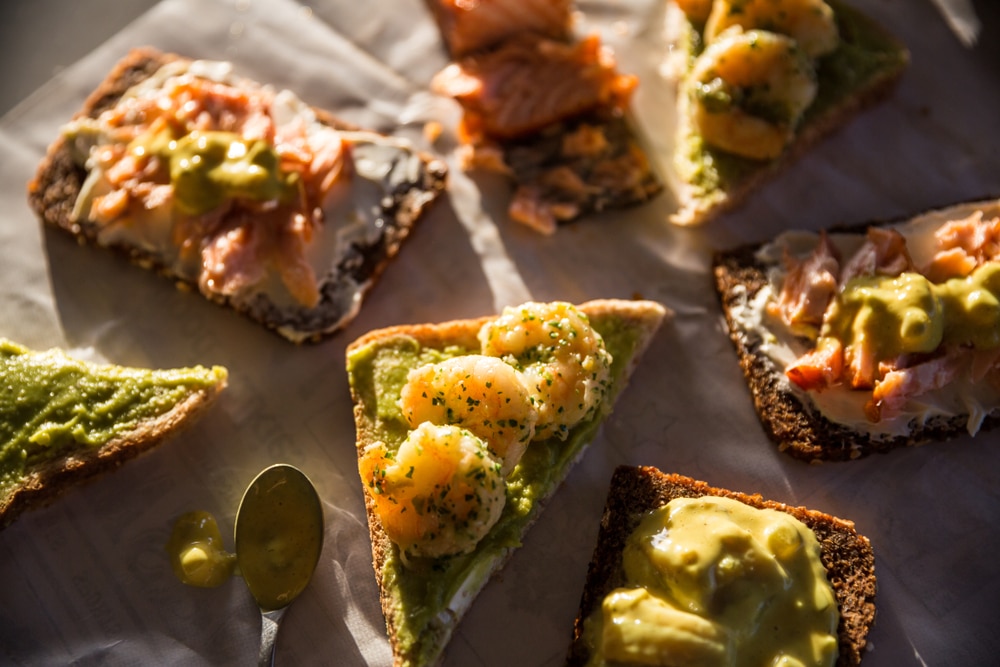 Source: Sofiia Popovych / shutterstock
Source: Sofiia Popovych / shutterstockThe name of this open sandwich, available all over the capital, is simple and means “buttered bread”.
But smørrebrød can come in a million varieties, running the gamut from hearty to dainty.
With ingredients that tend to change with the seasons, Smørrebrød can be a festive treat at Christmas, or a workaday lunchtime snack to get you through the afternoon.
One thing that never changes is the base, a slice of dense, wholesome rye. This harks back to the dish’s humble beginnings, and was used to hold ingredients instead of a plate.
Think of it as a delivery system for the toppings, which are often laid on generously.
On the more rustic end of the spectrum, these might be pork tenderloin with sautéed onions, liver pâté with pickles, fried medister sausage, breaded plaice fillet, roast pork with sweet and sour cabbage or meatballs with beetroot salad.
Or your smørrebrød could be light, with any number of salad configurations, smoked or cured salmon, mackerel or as a Danish take on avocado toast.